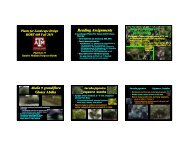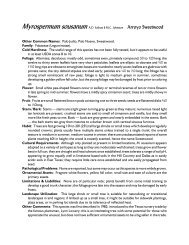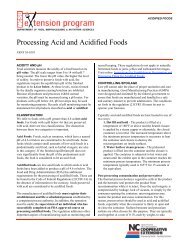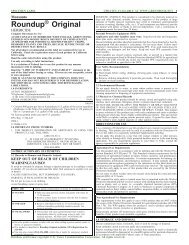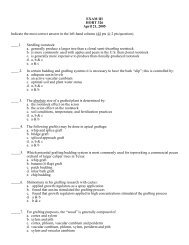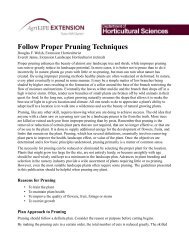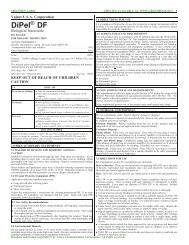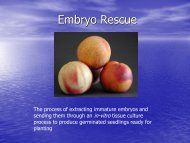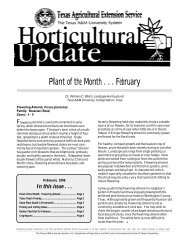Guide to PAS 2050 How to assess the carbon ... - Aggie Horticulture
Guide to PAS 2050 How to assess the carbon ... - Aggie Horticulture
Guide to PAS 2050 How to assess the carbon ... - Aggie Horticulture
You also want an ePaper? Increase the reach of your titles
YUMPU automatically turns print PDFs into web optimized ePapers that Google loves.
56<br />
Appendix IV: Uncertainty analysis<br />
Uncertainty calculation<br />
The recommended approach for calculating uncertainty<br />
is <strong>to</strong> perform a Monte Carlo analysis of <strong>the</strong> <strong>carbon</strong><br />
footprint model created in Step 4. There are many<br />
software packages available for conducting a Monte<br />
Carlo analysis; alternatively some LCA packages have<br />
integrated Monte Carlo functionality. A Monte Carlo<br />
analysis involves three stages:<br />
1. Define <strong>the</strong> probability density for each input by<br />
identifying: <strong>the</strong> distribution type (e.g. normal or<br />
lognormal); upper/lower bounds of <strong>the</strong> input value<br />
<strong>to</strong> reach 95% confidence; and correlation fac<strong>to</strong>rs<br />
2. Next, through a process of many repetitions,<br />
randomly vary each input value according <strong>to</strong> its<br />
distribution, and record <strong>the</strong> resulting new value of<br />
<strong>the</strong> output (<strong>carbon</strong> footprint)<br />
3. Repeat <strong>the</strong> process for each input, <strong>the</strong>reby building<br />
up a probability density of <strong>the</strong> footprint result. This<br />
uncertainty resultt can <strong>the</strong>n be reported as a ‘±%’<br />
or a range of values.<br />
some cases <strong>the</strong> model input probability density will<br />
already be established, such as <strong>the</strong> precision of an<br />
electricity meter or <strong>the</strong> uncertainty of an emission<br />
fac<strong>to</strong>r from a published study; in o<strong>the</strong>r cases <strong>the</strong><br />
input’s probability density must be determined by an<br />
expert, most likely <strong>the</strong> person who measured <strong>the</strong> input<br />
in <strong>the</strong> first place. Some secondary databases also<br />
include uncertainty information.<br />
Using uncertainty<br />
Uncertainty analysis produces data that can help in <strong>the</strong><br />
following ways:<br />
• To quantify <strong>the</strong> overall uncertainty of a <strong>carbon</strong><br />
footprint (range and distribution of <strong>the</strong> <strong>carbon</strong><br />
footprint itself), as described above<br />
• By providing a sensitivity/contribu<strong>to</strong>ry analysis:<br />
analysing uncertainty by life cycle stage or model<br />
input <strong>to</strong> identify relative ‘hot spots’, which have<br />
higher uncertainty than o<strong>the</strong>rs<br />
Defining <strong>the</strong> probability density of each model input is<br />
best performed during <strong>the</strong> data collection in Step 3. In




